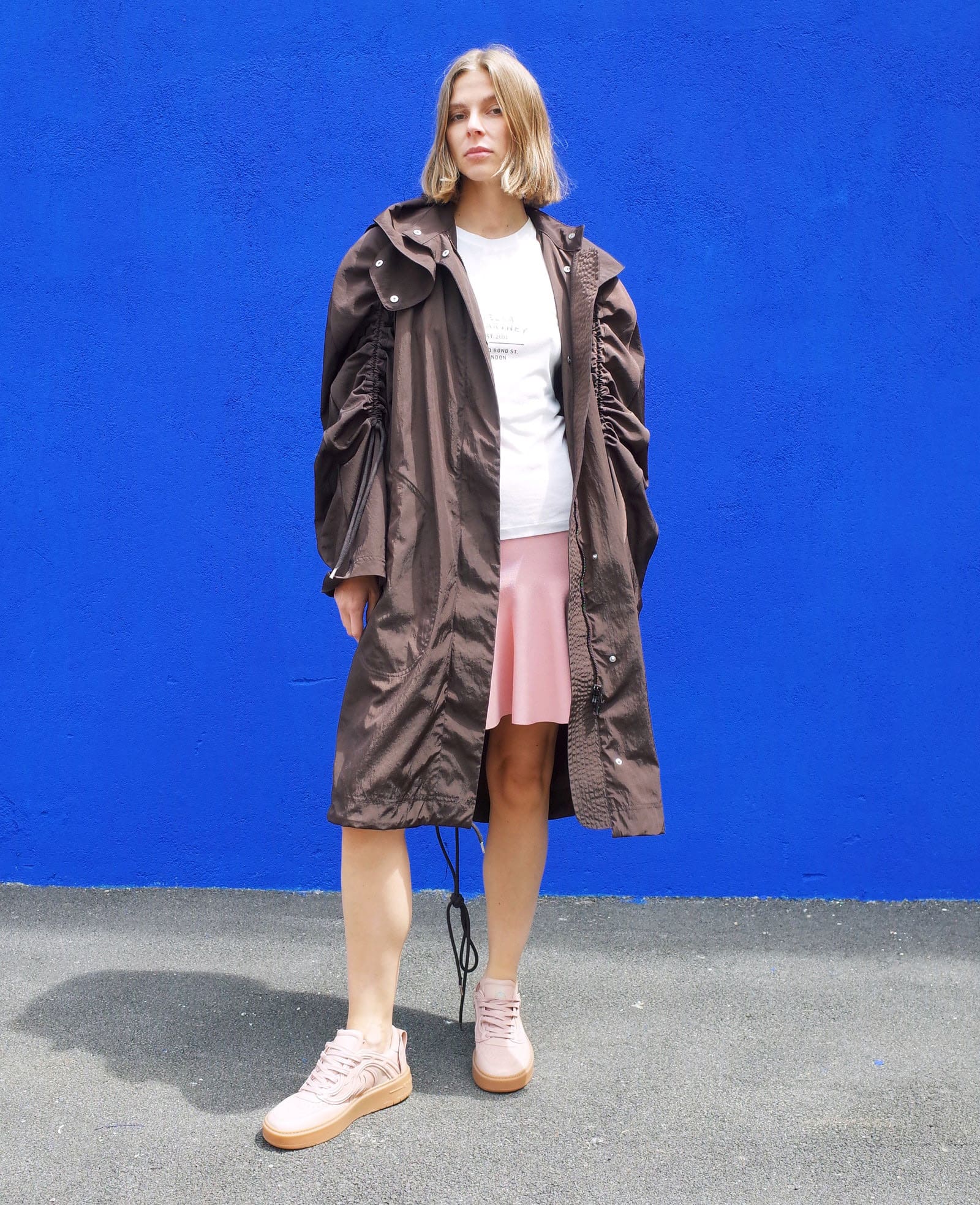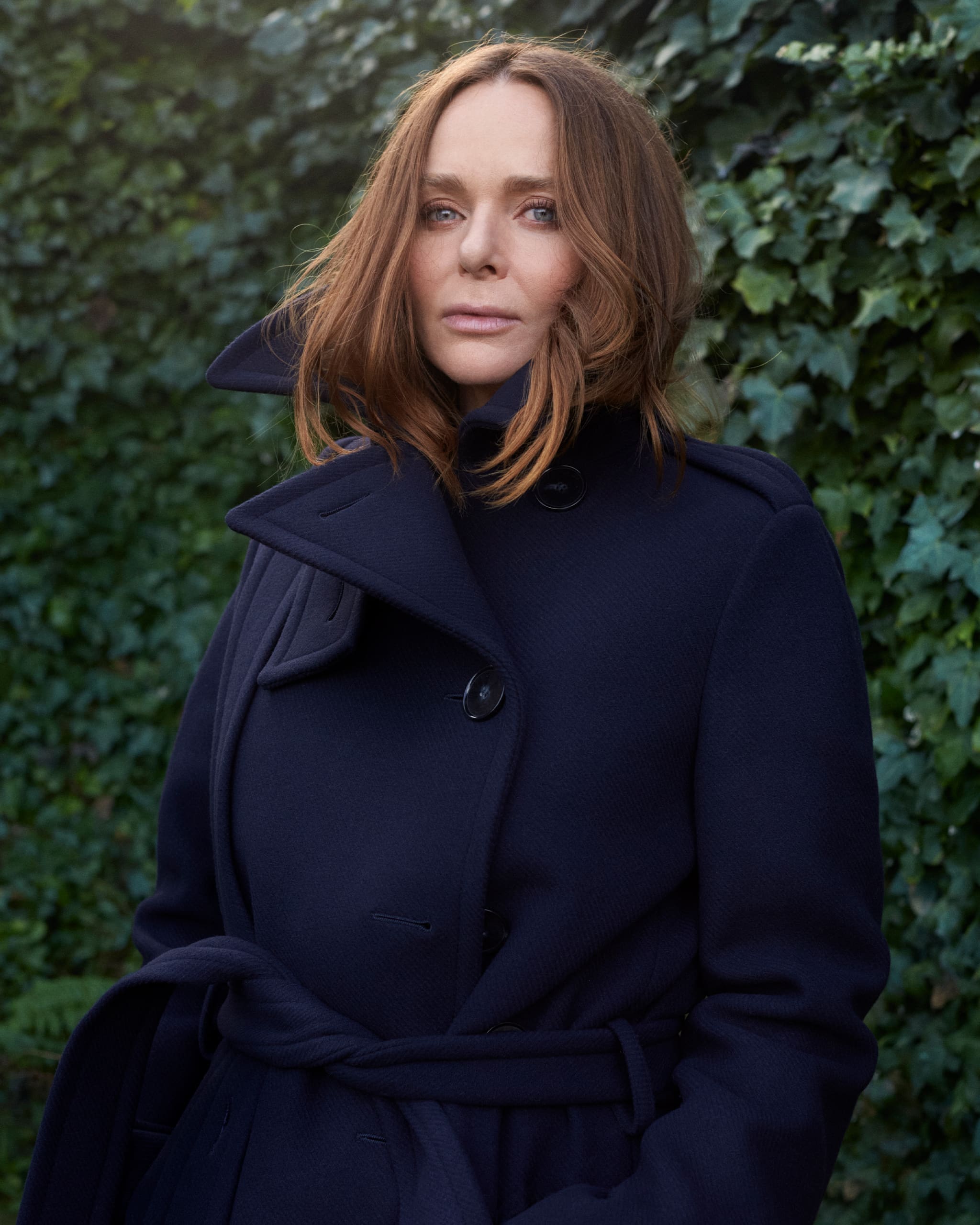Courtesy of Stella McCartney
The iconic British designer speaks up on fashion and sustainability
Stella McCartney has long been at the forefront of fashion’s sustainability movement. But despite a flurry of climate commitments from brands in recent years, change has remained slow across the industry at large. In fact, United Nations Fashion Charter figures suggest just 15 per cent of its signatories—those most committed to environmental action—are on track to achieve the 1.5C pathway set out by the Paris Agreement. “Greenwashing is a phrase for a reason,” the designer tells Vogue via Zoom from her Wiltshire home. “Our industry is very good at PR and very good at making things seem other than they really are.”
For the designer, a committed animal rights campaigner, striving to run her eponymous brand in a sustainable way has always been second nature. “I think the reason I have been doing this for my entire career now is really because I care,” she continues. “I don’t want to kill animals; I don’t want to kill the planet. I’m deeply invested in trying to be a good citizen of Mother Earth and a businesswoman and a fashion designer.”
It’s an ethos that appears to still be missing from a large proportion of brands within the industry. “I think everyone that’s a scale player has to play a role in change,” the designer says of the progress she hopes to see over the coming year. “We are one of the most harmful industries to the planet. I hope that people will be responsible in our industry to make changes that go above and beyond a financial [decision].”
Fashion is grappling with this tension perhaps more clearly than ever right now: a continuous pursuit of growth, while still publicly pledging to slash greenhouse gas emissions. McCartney believes a balance can be struck between the two. “I do believe if we can continue to progress, and if we truly want it, then we can replace bad business with clean business,” she says.

That’s one of the reasons that McCartney has teamed up with innovators that are developing more sustainable materials, including Econyl—regenerated nylon created from discarded fishing nets and other plastic waste. This month, the brand is launching its first commercially available, fully circular garment: a parka made from Econyl that’s 100 per cent recycled and recyclable. McCartney previously launched an Infinite Hoodie made using NuCyl—a fibre that’s 100 per cent post-consumer waste—with Adidas in 2019, but only 50 were available at the time.
“The parka fully closes the loop—it’s taking 100 per cent waste and then [when you’re finished with it] you can either bring it back to a Stella McCartney store or you can use the QR code on there and post it, and we can then recycle it back into fibre and make it into another garment,” McCartney explains. “It’s really cool—for me it’s cooler than just going, ‘Oh, I really love neon green fuzzy boots this season.’ It’s the most fashionable thing you can do if you’re working in the world of fashion right now.”
Alongside Econyl, McCartney has partnered with the likes of Bolt Threads on its Mylo “un-leather”, made from mushroom roots (the designer was part of an early “consortium” of brands backing the company) and Vegea, another leather alternative made from grape waste. Meanwhile, McCartney has also helped set up a new $200 million (£165 million) fund called Collab SOS, which invests in companies such as Bolt Threads, as well as Natural Fiber Welding, which has created a plastic-free leather alternative called Mirum, and Protein Evolution, a start-up that has developed a process designed to allow plastic waste (including nylon and polyester) to be infinitely recycled.
“It’s important for me personally to put investment into those new start-ups and into the future of fashion because I’m in fashion,” McCartney says of her involvement in the fund. “I’m working every day alongside so many incredible tech brands. We’re working in developing materials together and solutions, and then I’m bringing them into a business model. For me to use my partners [and] my contacts to upscale everything [via the fund], then you can truly see a meaningful change.”

As well as backing new innovations, the designer has been focusing on the importance of improving biodiversity, from her own organic farm – where she has launched a new rewilding project inspired by her theme for spring/summer 2023—to her latest collection, where she used regenerative cotton for the first time. McCartney worked with Söktaş, a family-run farm in Turkey, on a LVMH-backed pilot to transition five hectares of land from growing organic to regenerative cotton. “It’s really exciting; it took about three years [to achieve],” she says of the brand’s latest milestone. “I really hope that one day this sort of thing will be subsidized by governments.”
While McCartney has been leading the way when it comes to pushing for a more sustainable fashion industry, she’s clear that legislation is needed for significant progress to be made. It’s why she attended the G7 Summit in Cornwall in 2020 and is among a number of designers to have backed The Fashion Act in New York—a proposed bill that would require any fashion brand that does business in New York and has an annual global revenue of over $100 million (£84 million) to disclose their greenhouse gas emissions, as well as their energy, water, material and plastic usage and chemical management.
“We’re not a policed industry,” the designer explains. “We’re not subsidized in a positive way. I get taxed 30 per cent on my non-leather goods going into America—I take that into my margin, I don’t put that onto my customer. If I put five millimeters of pig leather onto that exact same product, the tax disappears. To me that is shocking; I’ve spoken to people like Biden at the G7 and John Kerry [about it]. These are the kinds of things we have to change. We have to set in place penalties in our industry—the automotive industry has it; the airline industry has it.”
It may not be usual to hear a top designer waxing lyrical about policy change, but it’s arguably something we need more of going forward. “There’s a lot of work to be done. I have my political hat on or my fashion hat on; I’m a bit confused as to which one to wear half the time,” McCartney jokes. “I just thought I’d go to [Central] Saint Martins and be a fashion designer.”
This article was originally published on British Vogue.
